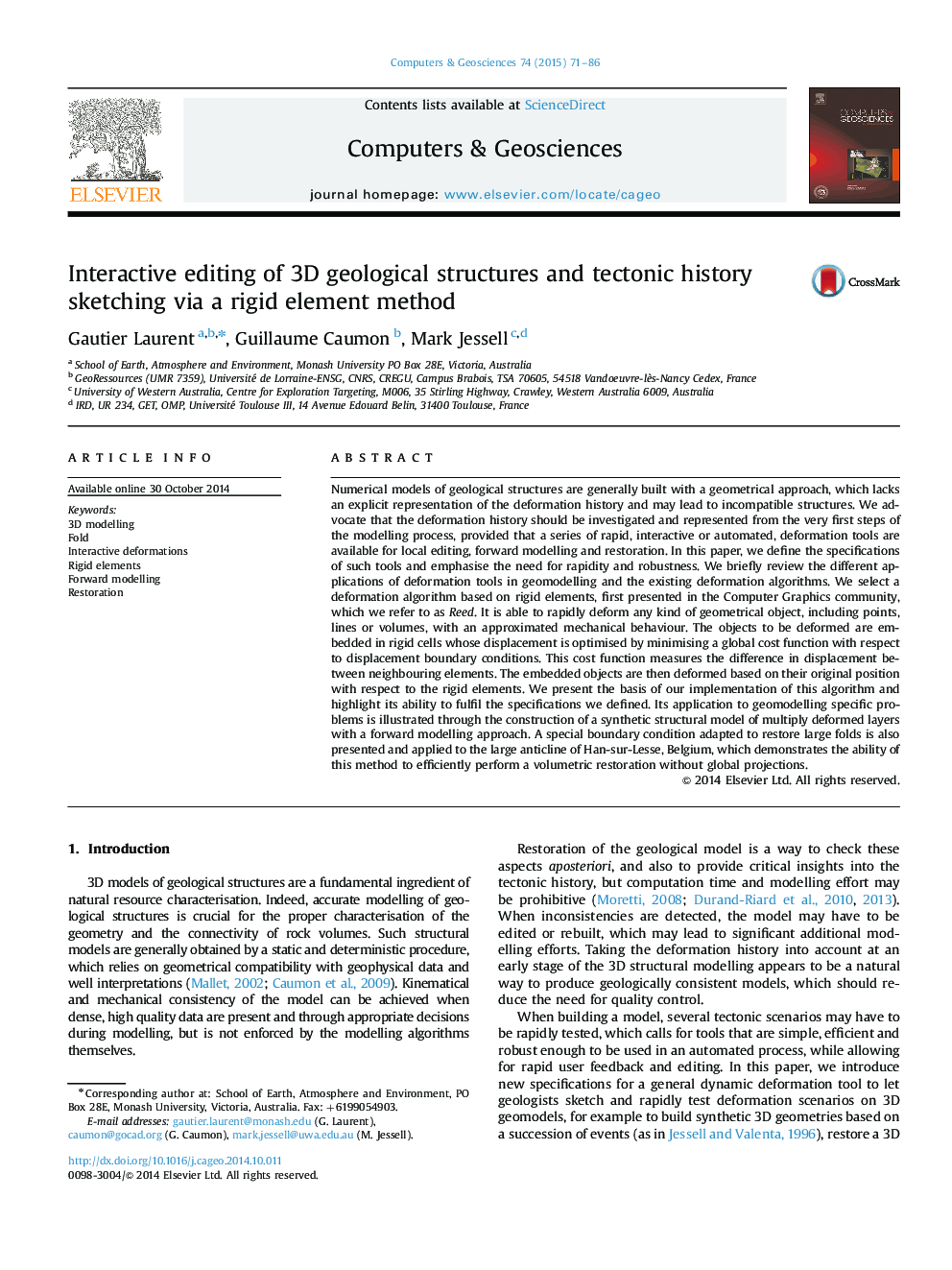| کد مقاله | کد نشریه | سال انتشار | مقاله انگلیسی | نسخه تمام متن |
|---|---|---|---|---|
| 506937 | 865072 | 2015 | 16 صفحه PDF | دانلود رایگان |

• We propose specifications for deformation tools for 3D geological structure modelling.
• We select a deformation algorithm based on rigid elements and deformation energy.
• We propose a process for modelling structures with several folding events.
• We implement boundary conditions for geological structure restoration.
• We implement anisotropy and local volume conservation rules.
Numerical models of geological structures are generally built with a geometrical approach, which lacks an explicit representation of the deformation history and may lead to incompatible structures. We advocate that the deformation history should be investigated and represented from the very first steps of the modelling process, provided that a series of rapid, interactive or automated, deformation tools are available for local editing, forward modelling and restoration. In this paper, we define the specifications of such tools and emphasise the need for rapidity and robustness. We briefly review the different applications of deformation tools in geomodelling and the existing deformation algorithms. We select a deformation algorithm based on rigid elements, first presented in the Computer Graphics community, which we refer to as Reed. It is able to rapidly deform any kind of geometrical object, including points, lines or volumes, with an approximated mechanical behaviour. The objects to be deformed are embedded in rigid cells whose displacement is optimised by minimising a global cost function with respect to displacement boundary conditions. This cost function measures the difference in displacement between neighbouring elements. The embedded objects are then deformed based on their original position with respect to the rigid elements. We present the basis of our implementation of this algorithm and highlight its ability to fulfil the specifications we defined. Its application to geomodelling specific problems is illustrated through the construction of a synthetic structural model of multiply deformed layers with a forward modelling approach. A special boundary condition adapted to restore large folds is also presented and applied to the large anticline of Han-sur-Lesse, Belgium, which demonstrates the ability of this method to efficiently perform a volumetric restoration without global projections.
(A) Initial structural model (Annot, France) adapted from Salles [2010], (b) Rigid Element based deformation tool defining a large folding event and (c) Applied deformation.Figure optionsDownload as PowerPoint slide
Journal: Computers & Geosciences - Volume 74, January 2015, Pages 71–86